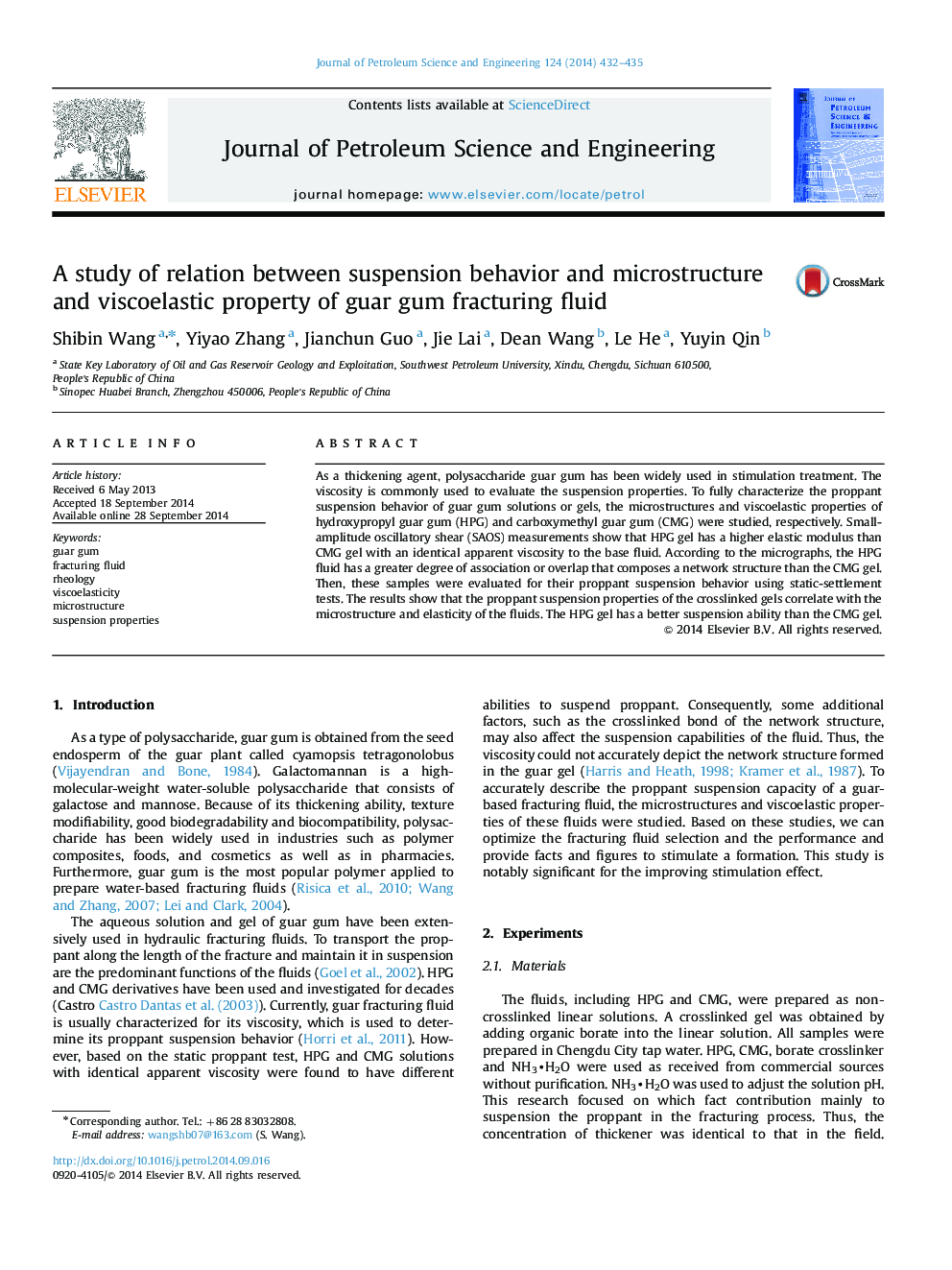| Article ID | Journal | Published Year | Pages | File Type |
|---|---|---|---|---|
| 1754967 | Journal of Petroleum Science and Engineering | 2014 | 4 Pages |
•Evaluating the proppant suspension ability is not sufficient only by viscosity.•Higher magnitude of elastic modulus results in better suspension ability.•The network structure in the HPG gel is tighter than that in the CMG gel.•HPG gel exhibited better suspension ability than CMG gel.
As a thickening agent, polysaccharide guar gum has been widely used in stimulation treatment. The viscosity is commonly used to evaluate the suspension properties. To fully characterize the proppant suspension behavior of guar gum solutions or gels, the microstructures and viscoelastic properties of hydroxypropyl guar gum (HPG) and carboxymethyl guar gum (CMG) were studied, respectively. Small-amplitude oscillatory shear (SAOS) measurements show that HPG gel has a higher elastic modulus than CMG gel with an identical apparent viscosity to the base fluid. According to the micrographs, the HPG fluid has a greater degree of association or overlap that composes a network structure than the CMG gel. Then, these samples were evaluated for their proppant suspension behavior using static-settlement tests. The results show that the proppant suspension properties of the crosslinked gels correlate with the microstructure and elasticity of the fluids. The HPG gel has a better suspension ability than the CMG gel.
Graphical abstractThe research indicate that predicting the proppant suspension characteristics of the fracturing fluid based on only the viscosity is not sufficient, and the microstructure and elasticity of the fluid should also be considered.Figure optionsDownload full-size imageDownload as PowerPoint slide
